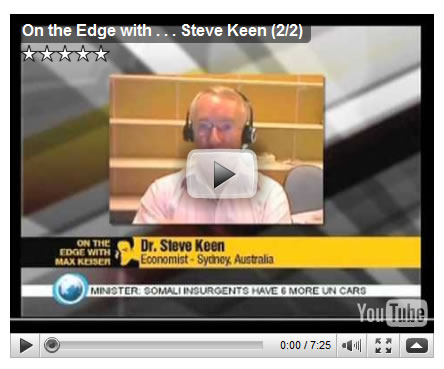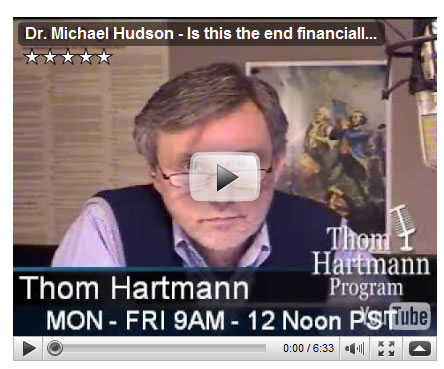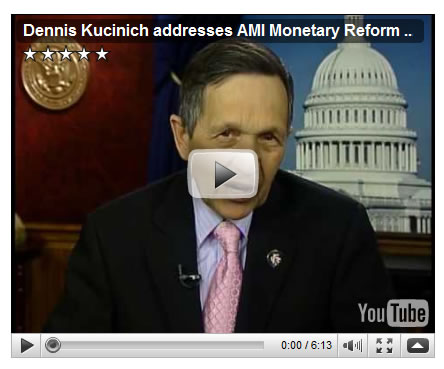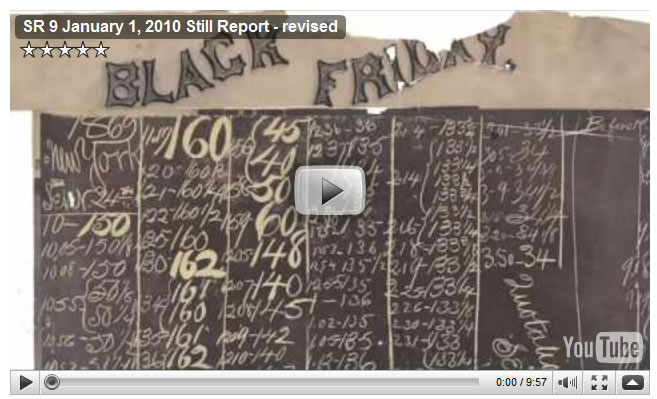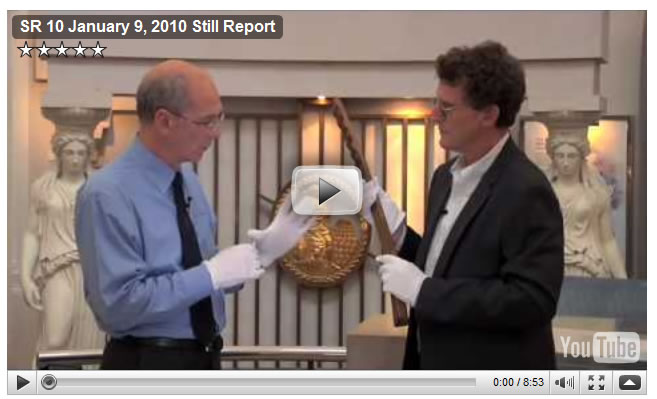How Is Credit Created? What is the Best Public Banking
Stock-Markets / Credit Crisis 2010 Mar 16, 2010 - 06:19 AM GMTBy: Washingtons_Blog
 This is an open letter to the economics, finance and banking communities.
This is an open letter to the economics, finance and banking communities.
I don't have any dog in the fight, other than to figure out and then publicize what is best for the greatest number of people. People I greatly respect advocate for federal-level public banking, state public banks or a return to the gold standard. I am simply attempting to start a high-level debate about what the best option is.
 Please see responses posted by economists and others below. I will update the responses as I receive them.
Please see responses posted by economists and others below. I will update the responses as I receive them.
How Is Credit Created?
I pointed out in September:
As PhD economist Steve Keen pointed out recently, 2 Nobel-prize winning economists have shown that the assumption that reserves are created from excess deposits is not true:
The model of money creation that Obama’s economic advisers have sold him was shown to be empirically false over three decades ago.
The first economist to establish this was the American Post Keynesian economist Basil Moore, but similar results were found by two of the staunchest neoclassical economists, Nobel Prize winners Kydland and Prescott in a 1990 paper Real Facts and a Monetary Myth.
Looking at the timing of economic variables, they found that credit money was created about 4 periods before government money. However, the “money multiplier” model argues that government money is created first to bolster bank reserves, and then credit money is created afterwards by the process of banks lending out their increased reserves.
Kydland and Prescott observed at the end of their paper that:
Introducing money and credit into growth theory in a way that accounts for the cyclical behavior of monetary as well as real aggregates is an important open problem in economics.
In other words, if the conventional view that excess reserves (stemming either from customer deposits or government infusions of money) lead to increased lending were correct, then Kydland and Prescott would have found that credit is extended by the banks (i.e. loaned out to customers) after the banks received infusions of money from the government. Instead, they found that the extension of credit preceded the receipt of government monies.
Keen explained in an interview Friday that 25 years of research shows that creation of debt by banks precedes creation of government money, and that debt money is created first and precedes creation of credit money.
As Mish has previously noted:
Conventional wisdom regarding the money multiplier is wrong. Australian economist Steve Keen notes that in a debt based society, expansion of credit comes first and reserves come later.
This angle of the banking system has actually been discussed for many years by leading experts:
“[Banks] do not really pay out loans from the money they receive as deposits. If they did this, no additional money would be created. What they do when they make loans is to accept promissory notes in exchange for credits to the borrowers' transaction accounts."
- 1960s Chicago Federal Reserve Bank booklet entitled “Modern Money Mechanics”
“The process by which banks create money is so simple that the mind is repelled.”
- Economist John Kenneth Galbraith
"[W]hen a bank makes a loan, it simply adds to the borrower's deposit account in the bank by the amount of the loan. The money is not taken from anyone else's deposit; it was not previously paid in to the bank by anyone. It's new money, created by the bank for the use of the borrower."
- Robert B. Anderson, Secretary of the Treasury under Eisenhower, in an interview reported in the August 31, 1959 issue of U.S. News and World Report“Do private banks issue money today? Yes. Although banks no longer have the right to issue bank notes, they can create money in the form of bank deposits when they lend money to businesses, or buy securities. . . . The important thing to remember is that when banks lend money they don’t necessarily take it from anyone else to lend. Thus they ‘create’ it.”
-Congressman Wright Patman, Money Facts (House Committee on Banking and Currency, 1964)"The modern banking system manufactures money out of nothing. The process is perhaps the most astounding piece of sleight of hand that was ever invented."
- Sir Josiah Stamp, president of the Bank of England and the second richest man in Britain in the 1920s.
"Banks create money. That is what they are for. . . . The manufacturing process to make money consists of making an entry in a book. That is all. . . . Each and every time a Bank makes a loan . . . new Bank credit is created -- brand new money."
- Graham Towers, Governor of the Bank of Canada from 1935 to 1955.
I've also noted:
In First National Bank v. Daly (often referred to as the "Credit River" case) the court found that the bank created money "out of thin air":
[The president of the First National Bank of Montgomery] admitted that all of the money or credit which was used as a consideration [for the mortgage loan given to the defendant] was created upon their books, that this was standard banking practice exercised by their bank in combination with the Federal Reserve Bank of Minneaopolis, another private bank, further that he knew of no United States statute or law that gave the Plaintiff [bank] the authority to do this.
The court also held:
The money and credit first came into existence when they [the bank] created it.
(Here's the case file).
Justice courts are just local courts, and not as powerful or prestigious as state supreme courts, for example. And it was not a judge, but a justice of the peace who made the decision.
But what is important is that the president of the First National Bank of Montgomery apparently admitted that his bank created money by simply making an entry in its book ...
Moreover, although it is counter-intuitive, virtually all money is actually created as debt. For example, in a hearing held on September 30, 1941 in the House Committee on Banking and Currency, then-Chairman of the Federal Reserve (Mariner S. Eccles) said:
That is what our money system is. If there were no debts in our money system, there wouldn’t be any money.
And Robert H. Hemphill, Credit Manager of the Federal Reserve Bank of Atlanta, said:
If all the bank loans were paid, no one could have a bank deposit, and there would not be a dollar of coin or currency in circulation. This is a staggering thought. We are completely dependent on the commercial Banks. Someone has to borrow every dollar we have in circulation, cash or credit. If the Banks create ample synthetic money we are prosperous; if not, we starve. We are absolutely without a permanent money system. When one gets a complete grasp of the picture, the tragic absurdity of our hopeless position is almost incredible, but there it is. It is the most important subject intelligent persons can investigate and reflect upon. It is so important that our present civilization may collapse unless it becomes widely understood and the defects remedied very soon.
This must-see 47 minute video provides details:
So here are the first two questions:
Do you agree that banks create credit by initiating loans, and then obtaining deposits subsequently, to comply with depository requirements? I'm not talking about the coins which governments create (in America, coins represent less than 5% of the total money in circulation).
Do you agree with Eccles and Hemphill that money is debt, in that new credit normally comes into existence when a new loan is issued?
Government Alternative
William Greider is a former Washington Post and Rolling Stone editor, and now writes for the Nation. Greider has written numerous books and articles on the economy over the course of many decades, including one of the leading books on the Federal Reserve, Secrets of the Temple.
In an article in the Nation, Greider argues that the government could solve the economic crisis by taking back the power of money creation from the banks and the Federal reserve:
For the first time in generations, [the Fed is] now threatened with popular rebellion.
During the past year, the Fed has flooded the streets with money--distributing trillions of dollars to banks, financial markets and commercial interests ...
Where did the central bank get all the money it is handing out? Basically, the Fed printed it, out of thin air. That is what central banks do. Who told the Fed governors they could do this? Nobody, really--not Congress or the president. The Federal Reserve Board, alone among government agencies, does not submit its budgets to Congress for authorization and appropriation. It raises its own money, sets its own priorities.
Representative Wright Patman, the Texas populist who was a scourge of central bankers, once described the Federal Reserve as "a pretty queer duck." Congress created the Fed in 1913 with the presumption that it would be "independent" from the rest of government, aloof from regular politics and deliberately shielded from the hot breath of voters or the grasping appetites of private interests--with one powerful exception: the bankers...
Banks are the "shareholders" who ostensibly own the twelve regional Federal Reserve banks...
The Federal Reserve is the black hole of our democracy--the crucial contradiction that keeps the people and their representatives from having any voice in these most important public policies. That's why the central bankers have always operated in secrecy, avoiding public controversy and inevitable accusations of special deal-making. The current crisis has blown the central bank's cover...
Altering the central bank would also give Congress an opening to reclaim its primacy in this most important matter. That sounds farfetched to modern sensibilities, and traditionalists will scream that it is a recipe for inflationary disaster. But this is what the Constitution prescribes: "The Congress shall have the power to coin money [and] regulate the value thereof." It does not grant the president or the treasury secretary this power. Nor does it envision a secretive central bank that interacts murkily with the executive branch...
If Ben Bernanke can create trillions of dollars at will and spread them around the financial system, could government do the same thing to finance important public projects the people want and need? Daring as it sounds, the answer is, Yes, we can.
The central bank's most mysterious power--to create money with a few computer keystrokes--is dauntingly complicated, and the mechanics are not widely understood. But the essential thing to understand is that this power relies on democratic consent--the people's trust, their willingness to accept the currency and use it in exchange. This is not entirely voluntary, since the government also requires people to pay their taxes in dollars, not euros or yen. But citizens conferred the power on government through their elected representatives. Newly created money is often called the "pure credit" of the nation. In principle, it exists for the benefit of all];
In this emergency, Bernanke essentially used the Fed's money-creation power in a way that resembles the "greenbacks" Abraham Lincoln printed to fight the Civil War. Lincoln was faced with rising costs and shrinking revenues (because the Confederate states had left the Union). The president authorized issuance of a novel national currency--the "greenback"--that had no backing in gold reserves and therefore outraged orthodox thinking. But the greenbacks worked. The expanded money supply helped pay for war mobilization and kept the economy booming. In a sense, Lincoln won the war by relying on the "full faith and credit" of the people, much as Bernanke is printing money freely to fight off financial collapse and deflation.
If Congress chooses to take charge of its constitutional duty, it could similarly use greenback currency created by the Federal Reserve as a legitimate channel for financing important public projects--like sorely needed improvements to the nation's infrastructure. Obviously, this has to be done carefully and responsibly, limited to normal expansion of the money supply and used only for projects that truly benefit the entire nation (lest it lead to inflation). But here is an example of how it would work...
Instead, Congress should create a stand-alone development fund for long-term capital investment projects (this would require the long-sought reform of the federal budget, which makes no distinction between current operating spending and long-term investment). The Fed would continue to create money only as needed by the economy; but instead of injecting this money into the banking system, a portion of it would go directly to the capital investment fund, earmarked by Congress for specific projects of great urgency. The idea of direct financing for infrastructure has been proposed periodically for many years by groups from right and left...
This approach speaks to the contradiction House Speaker Pelosi pointed out when she asked why the Fed has limitless money to spend however it sees fit. Instead of borrowing the money to pay for the new rail system, the government financing would draw on the public's money-creation process--just as Lincoln did and Bernanke is now doing.
The bankers would howl, for good reason. They profit enormously from the present system and share in the money-creation process. When the Fed injects more reserves into the banking system, it automatically multiplies the banks' capacity to create money by increasing their lending (and banks, in turn, collect interest on their new loans). The direct-financing approach would not halt the banking industry's role in allocating new credit, since the newly created money would still wind up in the banks as deposits. But the government would now decide how to allocate new credit to preferred public projects rather than let private banks make all the decisions for us.
Here are my third, fourth and fifth questions:
Do you agree with Greider that the American Constitution and/or the inherent right of sovereign nations gives the government the power and authority to itself create credit?
Do you agree with Greider that such government creation of credit need not be inflationary so long as only as much credit is created as is needed by the economy - in other words, the amount actually needed to buy goods and services?
Several monetary commentators have said that - if credit is created primarily by the government instead of private banks - that it would save the government trillions of dollars in interest. Specifically, they claim that private banks charge interest to the government to fund the government's debt, but that the government would owe no debt on credit it creates itself.
Is that true?
What Is the Best Public Banking Option?
As I wrote in November:
AFL-CIO president Richard Trumka told Congress last week:
If the Federal Reserve were made a fully public body, it would be an acceptable alternative.
The American Monetary Institute proposes the following alternative:
Incorporate the Federal Reserve System into the U.S. Treasury where all new money would be created by government as money, not interest-bearing debt; and be spent into circulation to promote the general welfare. The monetary system would be monitored to be neither inflationary nor deflationary.
Second, halt the bank’s privilege to create money by ending the fractional reserve system in a gentle and elegant way.
All the past monetized private credit would be converted into U.S. government money. Banks would then act as intermediaries accepting savings deposits and loaning them out to borrowers. They would do what people think they do now. This Act nationalizes the money system, not the banking system.
Bloomberg News columnist Matthew Lynn writes:
The U.K. government needs to start thinking about what it will do with all the banks it now owns. The answer is simple: Hand them to the people...
Instead of selling the stakes it acquired in the financial system to other banks, or listing the shares on the stock market, it could create mutually owned societies. Royal Bank of Scotland Group Plc could be a people’s bank, owned by everyone.That would ensure more diversity, competition and stability, all goals just as worthy as getting back the money Prime Minister Gordon Brown’s government spent on bank rescues...Sovereign nations such as the U.S. and England have the power to create credit and money. Taking the credit-creation power away from the banks and giving it back to the nation would ensure that credit is freed up for people's use, and the stranglehold over the economy is taken away from the too big to fails.
State Public Banks
Many people argue that - given its actions - people don't trust the federal government to create money.
Fair enough. Why not let the states do it?
Michael Moore recommends that the American people demand:
Each of the 50 states must create a state-owned public bank like they have in North Dakota. Then congress MUST reinstate all the strict pre-Reagan regulations on all commercial banks, investment firms, insurance companies -- and all the other industries that have been savaged by deregulation: Airlines, the food industry, pharmaceutical companies -- you name it. If a company's primary motive to exist is to make a profit, then it needs a set of stringent rules to live by -- and the first rule is "Do no harm." The second rule: The question must always be asked -- "Is this for the common good?" (Click here for some info about the state-owned Bank of North Dakota.)
As Moore notes, the state of North Dakota already has such a bank, and - because of that - North Dakota is just about the only state which is not running a huge deficit.
PhD economist and candidate for Florida governor Farid Khavari wants to create a Bank of the State of Florida, to create credit without burdening the state and its citizens with high interest charges by private banks.
See this for details.
Local Public Banks
An alternative to federal or state public banking is local public banks, as proposed by Edward Kellogg and others.
As summarized by Adrian Kuzminski:During this time of financial and economic crisis, it is worth recalling that credible alternatives to our current financial system exist, if largely unrecognized, and deserve serious consideration...
The now-neglected 19th-century American proto-populist, Edward Kellogg ... was a kind of godfather to the later populist movement on monetary issues. Perhaps the most profound of American writers on monetary issues, Kellogg advocated a decentralized but nationally regulated monetary system based on non-usurious, low-interest public loans to individuals. His vision inspired 19th-century century mutualists, greenbackers, populists, and others who sought to restructure the monetary system to redistribute wealth.
In our own day, when usurious credit in the form of private finance capital remains the dominant force in economic life, and is largely taken for granted even by educated people, the alternative Kellogg offers is more important than ever. Indeed, I suggest that Kellogg's theory of money is the best monetary alternative we have to the baleful system under which we suffer...
Edward Kellogg (1790-1858) was a New York City businessman whose losses in the crash of 1837 led him to examine the business cycle, monetary policy, and debt. In a series of writings, Kellogg developed the idea of ... having the government provide very-low-interest loans to the general public. These loans would have a uniform, fixed interest rate, established by law. They would be issued locally through a system of public credit banks he called the Safety Fund. Once issued, these low-interest loan notes would circulate as currency, replacing the privately issued banking notes of his day (which today take the form of Federal Reserve Notes)...
In his day Kellogg seems to have influenced even Abraham Lincoln who, according to historian Mark A. Lause, " . . . had his own copy of Kellogg's book, Labor and Capital [sic] advocating the government issuance of paper currency as a just means of redistributing wealth, and he corresponded with the author's son-in-law." Kellogg's public currency was intended to end the monopoly over the discretionary issuance of money at interest, which was held then (and now) by the private banking and investment system...
Kellogg proposed to establish local public credit banks, and we might imagine one in each community. These local public credit banks would be part of the Safety Fund. Instead of money being issued (as it is now) through a privatized and centralized money-management system on a top-down basis, primarily as loans at increasing rates of interest from a central bank to major commercial banks, and then to regional and local banks, and then to the public, money in his system would be issued by local federal banks as loans directly to citizens at nominal interest on the basis of their economic prospects. Once lent out, Kellogg's public credit notes would flow into circulation, providing the basis for a new currency backed by the assets of individual borrowers...
A centralized national currency would be replaced, in Kellogg's system, by a locally issued currency. But that currency would everywhere be subject to common national standards, ensuring that each local public credit bank reliably issued equivalent units of currency. A dollar issued by one local public credit bank of the Safety Fund, Kellogg intended, would be worth the same as, and be freely interchangeable with, one issued by any other. The independence of local branches would be guaranteed by the discretionary power reserved to them as a local monopoly actually to loan money; the compatibility of their monies would be ensured under federal law by fixing the value of the dollar by law at 1.1 percent/year – that is, by lending money everywhere to citizens at that rate...
The goal is to establish and preserve economic decentralization. Amounts of money lent in Kellogg's system would vary considerably from place to place, with some areas needing and creating more currency than others. The solvency of local federal public credit banks would be guaranteed by collateral put up by borrowers, and the money supply would be stabilized by repayment of loans as they came due. The interchangeability of public credit bank notes would ensure a wide circulation for the new money...
To achieve a stable currency, Kellogg insisted that this rate be fixed by law; perhaps today it would take a constitutional amendment.
Michael Hudson (Distinguished Research Professor at the University of Missouri, Kansas City, who has advised the U.S., Canadian, Mexican and Latvian governments as well as the United Nations Institute for Training and Research. He is a former Wall Street economist at Chase Manhattan Bank who also helped establish the world’s first sovereign debt fund) and Congressman Dennis Kucinich both support the federal public banking option:
On the other hand, California considered creation of a state bank modeled after North Dakota's bank in 1977. And the Massachusetts state Senate is currently considering creation of a state public bank, and other states are currently considering creating their own state banks.
So here is my sixth question:
Do you think a federal, state or local public banking option is best?
What About Gold?
Advocates for a return to the gold standard point out that - when a currency is pegged to a hard asset such as gold - it imposes fiscal discipline. Specifically, the government cannot simply run its "printing press" if its currency has to maintain a set ratio to a hard asset, and this prevents funding of endless wars and other misadventures.
I largely agree. But advocates for public banking, on the other hand, point to the numerous depressions which have occurred during periods when the gold standard was in place.
See these short videos (I don't necessarily agree with the conspiracy theories alleged in the first video, but only with the general question of whether we can assure that the quantity and quality of gold can be assured):
Here is my seventh and final question:
Is there any way to have a hybrid monetary system which provides the benefits of public banking with the fiscal discipline which something like a gold standard imposes?
Responses to This Essay
Steve Keen is an Associate Professor in economics and finance at the University of Western Sydney. He identifies as post-Keynesian, criticizing both modern neoclassical economics and (some of) Marxian economics as inconsistent, unscientific and empirically unsupported. The major influences on Keen's thinking about economics include Hyman Minsky, Piero Sraffa and Joseph Alois Schumpeter. His recent work mostly concentrates on mathematical modeling and simulation of financial instability. Keen writes at DebtDeflation.com/blogs
Keen responds:
I obviously see the need to reform the financial system, but my analysis of how credit is created (see my “Roving Cavaliers of Credit” post: http://www.debtdeflation.com/blogs/2009/01/31/therovingcavaliersofcredit/) makes me sceptical that any new system will “hold” so long as financiers can make money by financing asset-price speculation. I believe the experience of history should tell us that every system we’ve tried to far has finally succumbed to a debt-financed asset-price bubble, whose bursting has brought in at best a recession and at worst a Depression.
I have therefore developed proposals to tackle the root problem from the other side of the ledger: if financiers can always be expected to exploit the desire of borrowers to speculate on rising asset prices, then we have to remove that desire in the first place.
The most effective way to do this would be to redesign assets in a manner that still encouraged individual ownership and enterprise, but made the prospects of leveraged gains on asset speculation much less likely.
My two proposals are: to modify shares so that once they are on the secondary market they expire after a predefined period (say 25 years); and to limit the maximum leverage that can be secured against a property to some multiple (say 10) of the property’s annual rental income.
Explaining these in more detail:
Shares
Shares purchased in an initial public offering or float would last indefinitely while held by the original purchaser. But once these shares were sold, they would have a defined life of (say) 25 years.
This would have several benefits over our current system:
(1) Purchasers of shares on the secondary market would be forced to do what the Capital Assets Pricing Model (the delusional neoclassical theory that dominated academic finance prior to the GFC) pretended they do now: to value shares on a sensible valuation of expected future dividend earnings. You would only buy a share under this system if you expected a reasonably good stream of dividends from it, because in 25 years it would expire; and
(2) It would encourage the act of providing finance to new ventures. At present, the share market does a very poor job of providing new finance, with over 99% of the transactions being secondary market sales in search of capital gains. With my change, the only way to secure an indefinite stream of revenue from a new venture would be to provide it with some of its initial capital. This proposal would drastically shift the balance in favour of raising initial capital, which is the only truly socially beneficial role of the stock market.
Property
The great danger with the current system is that there is a positive feedback loop between property prices and leverage. An increase in leverage allows a purchaser to bid a higher price for a property, which encourages other purchasers to come in with higher leverage again with the intention of profiting from selling on a rising market. This is the basic mechanism that led to the Subprime Crisis.
If instead there were a maximum allowed level of leverage based on the income-earning potential of the property being purchased, then an increase in price would cause a reduction in leverage: if a purchaser truly wanted a given property and was willing to pay more than ten times the annual rental income to secure it, then he/she would necessarily have to use unleveraged funds to do so, and the increase in price would cause a reduction in leverage.
Stability
The real problem with other proposals–such as government-created credit, etc.–is that without reform to the way we define capital assets, this money can still be used to speculate on asset prices. This can lead to asset bubbles, and those who are successful in them will gain money and the power that comes with it. They will then be in a position to lobby for the unwinding of the reforms that were enacted during the crisis–as we have seen in our own lifetimes with the abolition of almost all the Great Depression era legislation in the leadup to the GFC.
This proposal would limit that prospect by preventing the formation of the class of Ponzi Financiers in the first instance. This to me is the real lesson of financial history: every crisis is caused by debt, the debt is taken on by Ponzi Financiers who then accumulate the economic and political power to reshape the system to suit themselves, leading to its inevitable collapse. We have to stop the Ponzis at the source, and the source is the potential for leveraged gain on asset prices.
Global Research Articles by Washington's Blog
© Copyright Washingtons Blog, Global Research, 2010
Disclaimer: The views expressed in this article are the sole responsibility of the author and do not necessarily reflect those of the Centre for Research on Globalization. The contents of this article are of sole responsibility of the author(s). The Centre for Research on Globalization will not be responsible or liable for any inaccurate or incorrect statements contained in this article.
© 2005-2022 http://www.MarketOracle.co.uk - The Market Oracle is a FREE Daily Financial Markets Analysis & Forecasting online publication.




